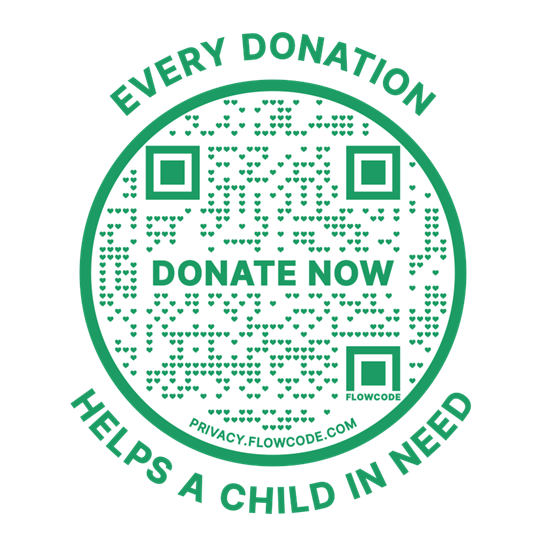Building Effective Direct Mail Campaigns for Non-Profits
Non-Profits are always looking for more engaging ways to capture attention and response from new donors and existing donors, and creating effective Direct Mail campaigns is a way to do just that. Social Media marketing has been a staple marketing channel over the last few years, but diminished response rates and increased costs put additional pressure on Non-Profits to use other marketing methods to pull in those valuable recurring donors.
When Non-profit marketers ask if Direct Mail fundraising still works, we cite statistics, past campaigns, and testimonials that Direct Mail has been proven to deliver results and long-term donors. Why? Because the combination of the most effective Direct Mail formats, the list, and messaging, can all be leveraged to actively engage readers and drive a response.
Non-Profits live in a world where most marketing is digital, younger workers have less experience in “offline” marketing, and the demands upon marketers is to differentiate and rise above digital clutter. And, in today’s marketing environment, learning how to use Direct Mail marketing effectively can be one of the differences that a Non-Profit makes to help them bring in new donors and get more from their existing donor base.

Does Direct Mail work for Non-Profits?
Direct Mail has been one of the most reliable marketing channels a Non-Profit can use. Where digital response rates are well under 1 percent, the average response rates for Direct Mail are much higher.
Of course, there are must-have elements to create the most effective Direct Mail, and it begins with the list. The mailing list you use for either acquisition (getting NEW donors) or retention (getting another donation from your existing donors) is the first element to get right.
For acquisition, you can use a Look-A-Like audience from your own data set of existing donors. This method captures the demographic profile – age, gender, income, marital status, etc. – and uses that information to find prospective donors who “look” like your best donors. This method helps you take advantage of your current donors to find new ones.

For retention, you want to create a Recency, Frequency, and Donation Amount (Monetary) model that helps you segment your donors into different types. These are called RFM Models. When you are able to segment the list, you can send more targeted and relevant messages to those groups, including Trigger marketing programs that launch based on what actions users have taken.
How do I make my Direct Mail stand out?
Apart from the Targeted List, making sure that your Direct Mail tells a compelling story, has great images, and clear, bold copy are the most important aspects for effective Direct Mail marketing. The way in which you tell the story of your cause, show the donors who feel like they’re a part of the bigger mission, and lead the prospect to a clear Call-To-Action (CTA) are ways you can design the layout of the Direct Mail piece. Some key fundamentals include:
- Use high-resolution images. By using iStock, Shutterstock, or another business that has high-quality photos is worth the expense. If your images look dark, cheap, off-proportion, or generally of poor quality, that will immediately turn off your recipient. Most photo websites have affordable packages, so use those.
- Use clean fonts and typography. A huge mistake that screams amateur is when there are too many fonts and sizes in a design. Keep it simple with just one or two fonts, and limit the bolding, italicizing, underlining, and exclamation points. The words and content should be enough so that the design reveals and highlights the message, instead of distracting from the message.
- Have a testimonial. The #1 reason consumers are compelled to act is because they believe the reviews of other donors. Make sure you have authorization, and it’s best to use real names (first name, last initial) and if you can, images of the people. This creates a more authentic connection and adds credibility to your cause.

No matter the type of Direct Mail you use, the use of story, images, copy, and those response elements are the most critical components to making a Direct Mail piece stand out.
The type of Direct Mail is called the format. A format can be a postcard, letter, self-mailer (which is a folded postcard or brochure that is folded and mailed), or even an oversized postcard. Formats have different strengths, and can be used for different kinds of Direct Mail outreach. According to USPS®, 66% of marketers mail postcards and newsletters, whereas self-mailers and catalogs are used by around 50%.
Postcards
Choosing the right postcard for a campaign requires understanding the size, space availability, and postal regulations. Note that as a Non-Profit, you qualify for Non-Profit postage rates, which are significant savings.
- Standard Postcard (4.25’’ x 6’’) is commonly used for high-volume outreach programs that are trying to get a lower cost-per-piece. They’re smaller, and the design needs to be simple and easy to understand. Think big headlines, clear images, and an economy of text to make sure that the offer stands out.
- Deluxe Postcards (6” x 8.5”) gives you twice the area than the smaller card. Even at Non-Profit rates, postage will be the largest cost component of any campaign. So for a smaller percentage of the cost, having more space for messages, headlines, and calls-to-action can help you engage your audience better.
- Sumo Postcard (6” x 11”) is the largest-size postcard you can mail, giving you – literally – the most space you can get on a postcard. This expanded size enables customers to have more images or large single image for maximum stopping power, and a very impactful headline or Call-To-Action.
Folded Postcards
When you have several products, a more involved story to tell, or larger images that help you make a stronger impression, the Folded Postcard is a great option. Most Non-Profits that choose this format use a landscape fold so that the user opens the card up to reveal a plea or fundraising program. These cards can mail at the normal postage rates. Also, they’re fun and interactive. Users have to open them to see what’s inside.
Letters
Letters have been a staple of Direct Mail marketing since its inception, and most Non-Profits have had experience with letters for fundraising and seasonal appeals from their donors.
The letter is a unique opportunity to tell a longer story, allowing you to guide a reader along the path of how they can help be a part of the larger cause Non-Profits serve.
How can I improve my mailers?
When you send marketing in a variety of channels, it’s called “Omni-Channel,” which is just a way to acknowledge that you market via digital, print, Direct Mail, events, Peer-to-Peer, billboards, etc.
By using multiple channels you usually find a message that works better than others. The tests you run on digital and social media can then be applied to your Direct Mail. If you see an image-message combination that works, use it.
Another way to improve your Direct Mail is by adding other engagement elements such as QR Codes. These codes create interactivity and a next-step action the donor can take directly from the Direct Mail piece. These codes have become more sophisticated to include links to landing pages, tracking, analytics, and more. These elements are easy to scan with phones, and bridge the gap between offline and online experiences.

Another way to improve a Direct Mail piece is to speak with an expert at Modern. We’ve done thousands of Non-Profit Direct Mail programs, and can help with messaging, imagery, appeals, and design.
Which is one of the most important strengths of Direct Mail?
The most pronounced and obvious strength of Direct Mail is the physical nature of the channel. You can pick it up, turn it over, flip it open, leave it on the table, put it on the fridge, read it later, and generally handle the piece. The physical nature is, simply, fundamentally different than a digital marketing action.

For existing donors, the Direct Mailer will hang around and remind them to come back to your site, to upgrade their giving, and to re-engage with the cause they already aligned to.
Direct Mail is one of the most powerful channels Non-Profits can use to relate their story of the cause, how they help, and then what the donors can do to make a difference in the world.
Call a Direct Marketing Consultant at 800.959.8365.

